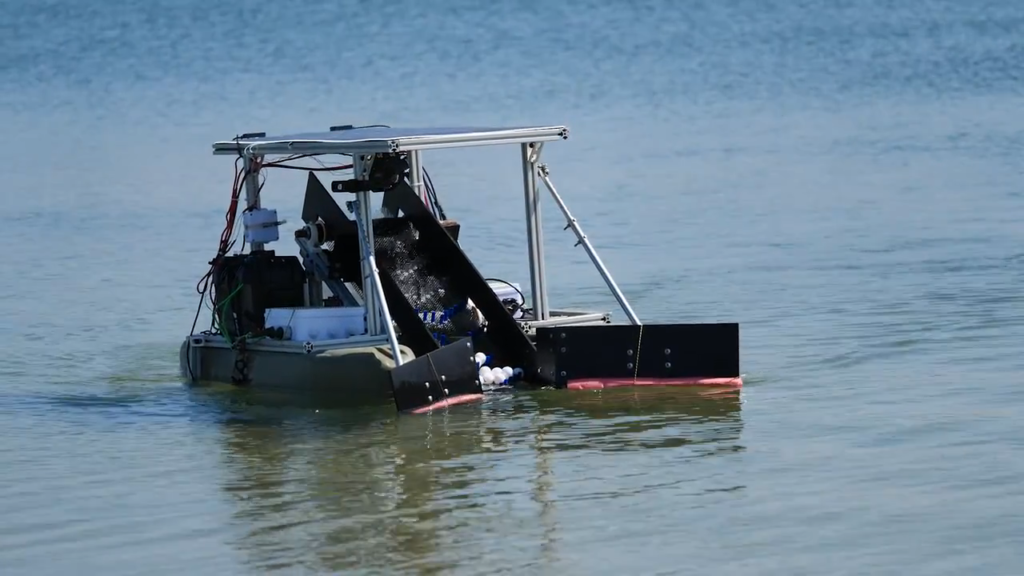According to take3forthesea, over 8.3 billion tonnes of plastic has been made since its mass production began in the 1950s. Only 9% of this plastic has been recycled, the other 91% sits in landfill, floats in our oceans or has been burned. An estimated 8 million tonnes of plastic enter the ocean every year. This shows how important everybody should take responsibility in the fight against plastic pollution.
In August 2019, the University of San Diego- Shiley Marcos School of Engineering students built and enhanced FRED (Floating Robot to Eliminate Debris). It is a robot designed to remove plastics from ocean in order to prevent the increasing amount of microplastics. This project is linked to a United Nations Sustainable Goal: Conserve and sustainably use the oceans, seas and marine resources (”Life Below Water”).

As described in the University of San Diego post, Zach Sourwine, Cameryn Seymour, Jazmyn Gonzalez, and Desmond Jones tested their solar-powered semi-autonomous robot, FRED by making it recover ping-pong balls from Mission Bay, do long-distance trips and perform autonomous navigation.
They worked on FRED robot during their summer engineering internship with Clear Blue Sea, a non-profit organization based in San Diego in order to fight against the problem of ocean plastic pollution. FRED is still a prototype, as Clear Blue Sea projects to have a final product by 2023. Sourwine, a senior mechanical engineer, spoke about the impact that the project has had on his future career, “I hope to do something with sustainability engineering in the future, so I think this really sparked a passion for it”. He said. “There are billions of pieces of plastics, particles in the ocean, but, I mean, nothing is going to change until you start making an effort to change it”.
The video below from University of San Diego shows how the tests were done:
As shown in this video, the prototype is composed of two flaps in front fixed at a certain angle, that allow the collection of plastics from different places and corral them onto a conveyor belt that transports them into a container. It is controlled with an Xbox controller (two joysticks) and has solar panels on top to power it. It has also a camera installed on top to allow the person controlling it to see what direction it is going.
These kind of projects shows how engineering is important, fun and is staying afloat, as they are still students, but they are starting to solve real-life problems facing the world. They used engineering skills like design, creativity and innovation, teamwork, communication, programming skills, etc. You can learn more about Design Thinking and Programming Arduino in our Digital Classroom, so that you can also start to make a difference.
